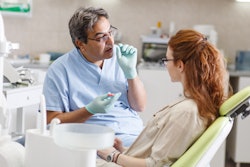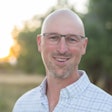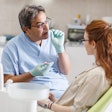
Since 2002, the privacy and security rules have required covered entities, including dental practices, to provide patients with their records upon request. Previously, the process of giving patients their information involved the labor-intensive tasks of photocopying, scanning, and mailing paper copies.
The vast majority of dental practices have made the obvious shift to electronic records due to the incredible convenience and quality they provide. However, our ability to access and share patients' information electronically has lagged quite a bit.
While some practices rely on secure email and patient electronic portals to send patients their records, these systems can be cumbersome, and there are monumental technical barriers that have prevented us from having true access and exchange of patients' comprehensive records. It led to the need for multiple communication platforms, which has been described as "subscription fatigue."
This lack of data accessibility, it turns out, has a widespread negative impact on the quality of patient care we can deliver and the health of our practices' bottom line. However, we have remained ignorant of these consequences, as -- while it is easy to understand the gaps in our care when compared to other existing offices -- it is quite challenging to comprehend the scale of opportunities we can capture from workflows that do not yet exist.
That is why the 21st Century Cures Act, which was signed into law in 2016, will unlock some of the largest leaps in progress in dentistry. The Cures Act is designed to give patients and their healthcare providers secure access to health information in the interest of accelerating innovation and elevating care.
The 21st Century Cures Act requires that providers furnish patients with access to their electronic health information as soon as it's finalized. It includes clinical notes and test results. In contrast, the privacy rule sets a 30-day time frame for the release of records with a 30-day extension, except in cases where state law is more stringent. Now the 21st Century Cures Act supersedes the privacy rule.
This regulation also allows dentists and patients alike to have more agency in the care they provide and receive, respectively. Given that a single incidence of violating the information blocking rule, contained within the Cures Act, has a fine of up to $1 million per violation, our ability to access and use patient information in new, powerful ways is virtually inevitable. Keep in mind that while the Cures Act covers both electronic dental records and electronic medical records, it is crucial to maintain separate but interoperable (connected) systems to provide comprehensive, patient-centric care.
If dental software developers are beholden to the constraints and priorities of a medical record system, their ability to iterate on modern dental charting, imaging, and other dental technologies could be severely limited. Having dental data absorbed into a monolithic medical record system will also lead to innovation in dental records systems always taking a backseat to medical.
Interoperable data exchange, allowing a seamless flow of information between dental and medical providers while keeping the underlying records separate and under the patient's control, is the ideal path forward. It empowers patients through data ownership while avoiding the pitfalls of forcing square dental pegs into round medical holes.
HIPAA and the Cures Act enshrine patient data rights that we as healthcare providers must uphold. Distinct but interoperable dental and medical records are crucial for honoring the patient's right to easily access, understand, and direct where their complete health information flows. It is the best way forward for a truly patient-empowered future of modern, comprehensive care.
Dr. Bryan Laskin is a Minnesota dentist and tech entrepreneur on a mission to solve the biggest problem in dentistry: the lack of patient data interoperability through innovation, education, and standardization. Laskin is a practicing dentist and owner of Lake Minnetonka Dental for over 20 years; creator of Upgrade Dental, Digital Nitrous, OperaDDS, the Dental Standards Institute; co-founder of Toothapps; as well as the author of The Patient First Manifesto, Dental Disorder and host of "The Patient First Podcast." Learn more at BryanLaskin.com.
Linda Harvey, MS, RDH, began her career in healthcare as a dental hygienist. Since that time, she’s become a nationally recognized dental risk management and corporate compliance expert. Linda is the founder of the Dental Compliance Institute, an exclusive compliance membership group for dental service organizations and private practices. Harvey has been recognized as a distinguished fellow by the American Society for Healthcare Risk Management. Harvey can be reached at [email protected].
The comments and observations expressed herein do not necessarily reflect the opinions of DrBicuspid.com, nor should they be construed as an endorsement or admonishment of any particular idea, vendor, or organization.



















